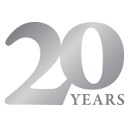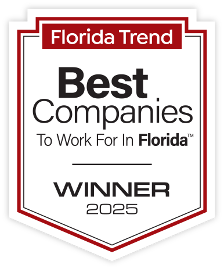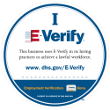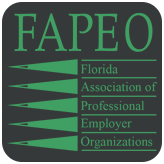Salary Threshold for Overtime Exemptions Proposed to be Increased in 2016

On June 30, the U.S. Department of Labor released a proposal to update the regulations governing which executive, administrative, and professional employees (white collar workers) are exempt from the Fair Labor Standards Act's minimum wage and overtime pay protections. The DOL last updated these regulations in 2004.
The proposal would raise the salary threshold from $455 a week (the equivalent of $23,660 a year) to about $970 a week ($50,440 a year) when finalized in 2016. The proposed regulations focus primarily on updating the salary and compensation levels needed for white collar workers to be exempt. Specifically, the DOL proposes to: Read More
- Set the standard salary level at the 40th percentile of weekly earnings for full-time salaried workers;
- Increase the total annual compensation requirement needed to exempt highly compensated employees (HCEs) from $100,000 to the annualized value of the 90th percentile of weekly earnings of full-time salaried workers; and
- Establish a mechanism for automatically updating the salary and compensation levels going forward.
The proposed regulations are available for review at www.dol.gov/whd/overtime/NPRM2015/OT-NPRM.pdf. When they are published in the Federal Register, details on submitting comments will be provided.
Tips Versus Service Charges

The Internal Revenue Service reminds employers that automatic gratuities are service charges, not tips. Employers should make sure they know the difference and how they report each to the IRS. Read More
What are tips?
- Cash tips received directly from customers.
- Tips from customers who leave a tip through electronic settlement or payment. This includes a credit card, debit card, gift card, or any other electronic payment method.
- The value of any noncash tips, such as tickets, or other items of value.
- Tip amounts received from other employees paid out through tip pools or tip splitting, or other formal or informal tip sharing arrangement.
What are service charges?
An employer or employee's characterization of a payment as a "tip" is not determinative. Again, the absence of any of the four factors listed earlier creates a doubt as to whether a payment is a tip and indicates that the payment may be a service charge.
Examples of service charges commonly added to a customer's check include:
- Large dining party automatic gratuity
- Banquet event fee
- Cruise trip package fee
- Hotel room service charge
- Bottle service charge (nightclubs, restaurants, etc.)
Generally, service charges are reported as non-tip wages paid to the employee. Some employers keep a portion of the service charges. Only the amounts distributed to employees are non-tip wages.
Know the Signs of Heat Distress in Your Employees

Prevention of heat stress in workers is important. Heat Distress can lead to serious physical illness, fatigue and injury. It's not just outdoor workers that are at risk for heat distress, those that work in hot environments such as kitchens, maintenance shops and laundries may also be impacted. Follow these tips from the SimpleHR Safety Team to prevent, identify and respond to signs of heat distress in your employees. Read More
Heat Exhaustion
May be the result of a loss of fluid and/or salt by heavy sweating. Symptoms include clammy and moist skin, extreme weakness or fatigue, giddiness, nausea, headache and fainting.
Heat Stroke
High body temperature (103 degrees), red hot and dry skin (no sweating), rapid and strong pulse, throbbing headache, dizziness, nausea, confusion.
Heat Cramps
May be due to excessive sweating and loss of salt due to over activity. Symptoms include muscle spasms in the legs, arms and or abdomen, nausea.
OSHA recommendations for working in heated conditions or outdoors are:
- Drink water every 15 minutes, even if you do not feel thirsty
- Take regular breaks, rest in the shade to cool down
- Learn the signs of heat distress and what to do in an emergency
- Keep an eye on fellow workers
- Wear a hat and light colored, loose clothing
- Take it easy the first few days of work in heated conditions. Let your body get use to it.
Recommendations employers should follow to protect employees are:
- Schedule maintenance or repair jobs in hot areas for cooler months if possible
- Schedule hot jobs for the cooler part of the day
- Acclimate employees by exposing them for progressively longer periods to hot areas or work environments
- Reduce the physical demands of employees
- Assign extra workers or relief workers for physically demanding jobs
- Provide cool water or liquids (sports drinks) and water breaks with rest periods regularly
- Provide cool areas for use during breaks
- Monitor workers who may be at risk of heat stress
- Provide heat stress training to supervisors, managers and employees during the heated season
If you see any of the above signs:
- Call for medical assistance immediately
- Move the victim to a shady area
- Cool the victim rapidly - Immerse them in a tub or shower of cool water if possible. Use a sponge or spray them with a garden hose, wrap the victim in a cool wet sheet or towels and fan them vigorously
- Monitor the body temperature and continue cooling methods until the body temperature drops to 101-102 degrees
For more information, review the heat distress information available on the OSHA and CDC websites.
Request Information
Find out how SimpleHR can be the employee management solution for you!
Did You Know
- The average settlement of a negligent hiring lawsuit exceeds $1.6 million.
- The US Department of Labor estimates that the average cost of a bad hiring decision can equal 30% of the first years potential earnings.
~ News Archives ~
* SimpleHR provides HR assistance as a Client benefit. This assistance is provided by an HR professional as general information and is not a substitute for legal advice.









